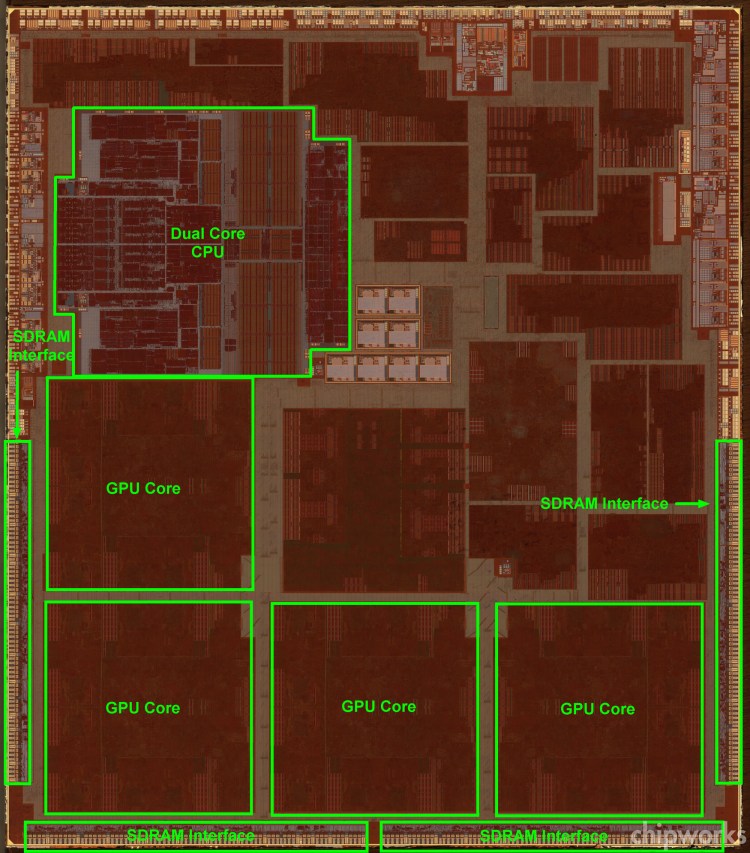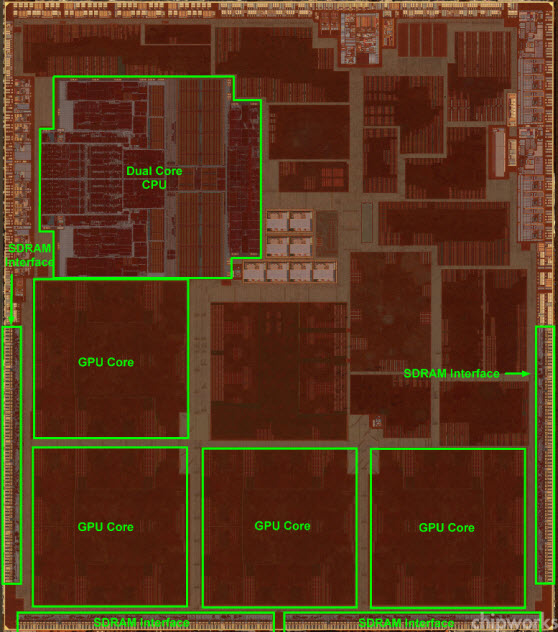The newly released fourth-generation iPad from Apple has just surpassed Sony’s eight-month-old PlayStation Vita game handheld in graphical performance, based on an analysis of the iPad’s performance from Anand Shimpi of AnandTech and available knowledge of the Vita.
The new iPad uses the new A6X processor, which includes a new graphics processing unit (GPU) that is twice as powerful as the third-generation iPad. As we noted in our review of the PlayStation Vita, the Vita has a nearly identical GPU to the third-generation iPad. The only differences are the clock speed and design architecture (to fit the Vita’s processor). This latest iPad — which is a tablet, not a dedicated game console — has a more powerful GPU than the PlayStation Vita.
Despite the nearly identical GPUs, we previously wrote that the Vita is more powerful than the third-generation iPad for two major reasons:
- The Vita only has to populate graphics onto a 960 pixel by 540 pixel resolution display, compared to the iPad’s much larger 2048 pixel by 1536 pixel resolution display.
- The Vita’s central processing unit (CPU), as explained by developers, is a quad-core processor with a clock speed that starts at 800 megahertz but can reach up to 2 gigahertz, compared to the iPad’s 1 gigahertz dual-core processor.
Even with a more efficient CPU architecture, more RAM, and arguably better software, the third-generation iPad couldn’t offer better performance than the Vita with the same GPU.
But with the latest version of the PowerVR GPU (the SGX 554MP4), the new fourth-generation iPad has significantly more graphical throughput than the Vita and 3rd generation iPad. This enables the newer GPU to (theoretically) process twice as much data as the older model, which is why Apple claims twice the performance over the previous iPad released in March. That speed boost, combined with the faster 1.4-gigahertz dual-core processor and a higher-clocked GPU (200 megahertz for the Vita vs. a maximum of 300 megahertz for the iPad), is enough to firmly set the fourth-generation iPad ahead of the Vita in gaming performance.
In graphics-based benchmarks, Shimpi recorded that the fourth-generation iPad performs up to twice as fast as the third-generation iPad. The most important test, scored below, shows a 99 percent increase in frames per second on the new iPad. With twice the RAM, twice the graphics processing speed, and a faster dual-core processor, these numbers suggest that the iPad’s increase in performance surpasses the Vita’s graphical capabilities.

But there’s a catch: The iPad may provide gaming performance that is definitively better than the Vita’s thanks to all of these factors, but it still has to render six times the number of pixels as the Vita. In effect, the new iPad may still lag behind the Vita in some circumstances. Most new iPad games are, however, designed for the iPad 2’s lower resolution 1024 pixel by 768 pixel display, which is only 30% larger than the Vita display. At these lower resolutions, the new iPad should be the clear winner.
However, when it comes to raw computing power, the Vita is no longer the most powerful portable graphics device. The fourth-generation iPad now takes that role thanks to the newer-generation PowerVR GPU.
Should Sony be worried? Not because of performance. As a dedicated game console, the Vita is still has built-in physical controls — an extremely important feature for gamers — while the iPad does not. Sony’s biggest concerns right now for the Vita are poor sales and a limited game selection.
Photo credit: Chipworks
VentureBeat's mission is to be a digital town square for technical decision-makers to gain knowledge about transformative enterprise technology and transact. Learn More


